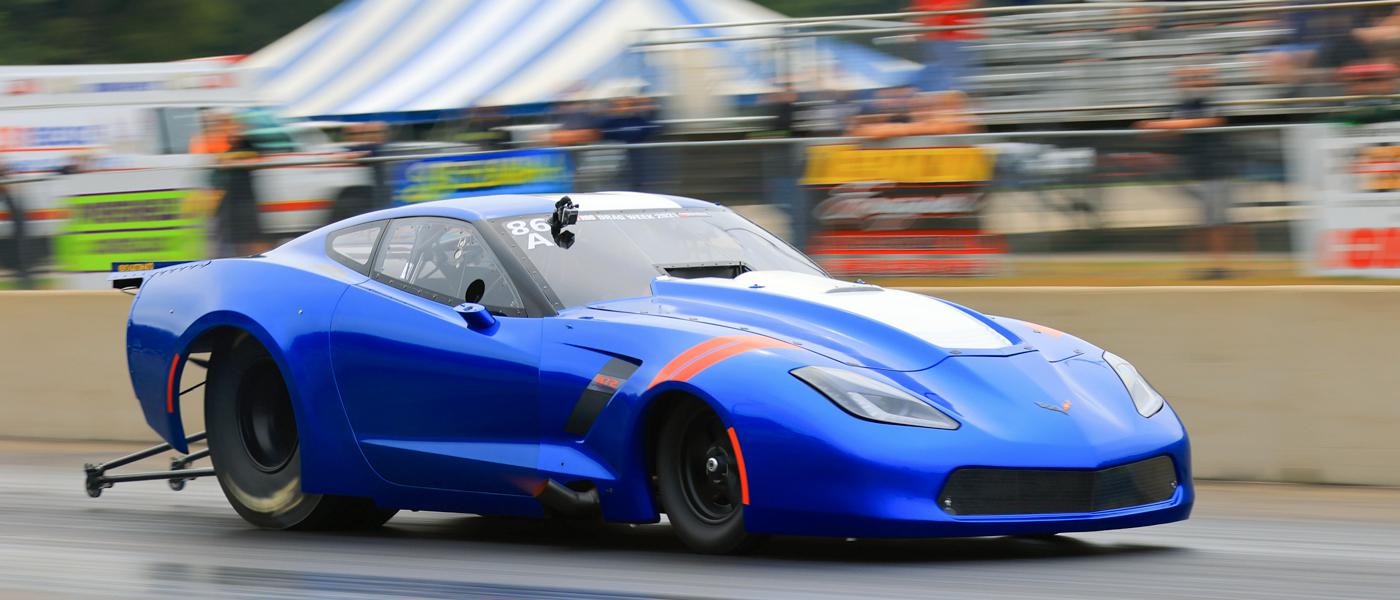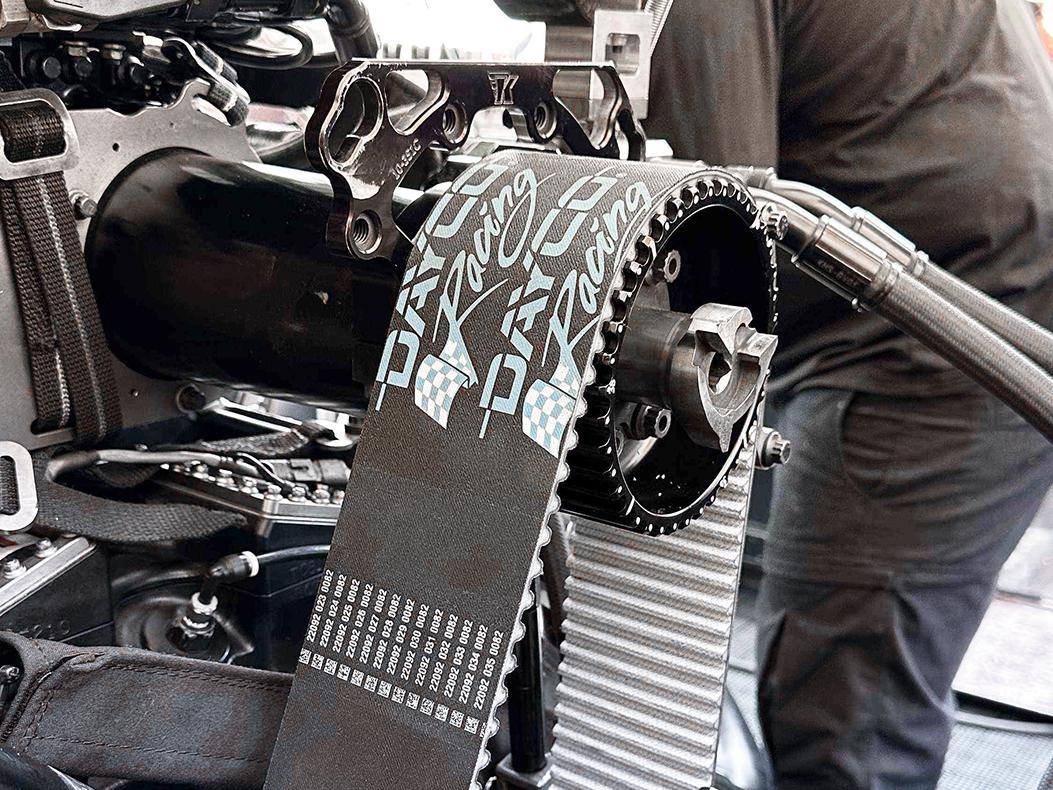Isky Bushing Roller Lifters—The Truth, The Whole Truth and Nothing but The Truth!

Nolan Jamora of Isky Racing Cams goes into detail on why the bushing roller lifter is the right choice for 95% of the applications in the performance industry.
Let’s get right into it! I know a lot of these articles are PR jobs and designed to convince you that whatever product they are selling is the best and there are no other options out there. There have been many articles and interviews on the bushing vs. needle roller over the years that I and our competitors have done. Many have been edited and often great information that could allow you to form an opinion is left out. In this article, I have been assured that it will be left intact just as I wrote it. Hopefully, they fix the spelling!
Isky was the first company to bring the bushing roller lifter to the marketplace after millions and millions of cycle tests on our Spintron and in the field. We released them years before many of our competitors and have continually improved the design and bushing material over the last decade. I can guarantee no company comes close to the testing we have done. This I feel gives us the clearest picture and the data to back up what I will say here.

The million-dollar question of which is better, the bushing roller lifter or the needle roller lifter, can easily be answered in one sentence! The bushing roller lifter is the best lifter based on its wider optimal operation window. What I mean by that is in the real world of performance, be it hot street, marine, drag, oval, sprint, drag & drive, NA, turbo, ProCharger, and Screw Supercharger applications, the bushing roller is more forgiving and will last longer over wider ranges of operating conditions. There is no doubting that fact. It’s been proven over and over through testing and in the field.
What do I consider the real world of performance? NASCAR, FIA Sportscars, Daytona Prototypes, Pro Stock, Top Fuel, etc. would not be on that list! These are very narrow window engine operation disciplines that are outliers in our industry. The engines are continuously rebuilt and designed for max horsepower with some reliability. They are pushed to the limits of design where engine friction and oil consumption and thickness are major focuses to get that last ¼ horsepower. They also have unlimited budgets compared to the other 95% out there. In saying all that, we have won the 24 Hours of Le Mans in a prototype with a team that was willing to give up a little power for the assured longevity of the engine.
For the rest of us and most of our customers, engines need to last! It’s the reason many have switched over the years and are amazed by their longevity. Our bushing lifters have dominated HOT ROD Drag Week for many years, which is the best example of their benefits. Dave Schroeder and John Ens run Drag Week with what I consider the hardest combination on roller lifters and valvetrain. They run an 872 Reher Morrison nitrous engine combination. The cam lift is 1.200” in race trim which through rocker ratio change becomes 1.000” on the street driving legs. Before switching to our bushing before their win in 2017, they broke a lifter each year in the combo. They won in 2017 and again in 2021. They ran mid-six (6) seconds and averaged 250 miles a day. High heat, wide RPM operating ranges, high spring pressures, differing oil temps, spring fatigue, oil break down, sustained hour after hour RPM ranges, and not one failure. This is what I consider a true real-world test of the bushing roller lifter.

Top engine builders have been running the EZ Roll Bushing lifters for well over a decade. From Jim Oddy setting Pro Mod records and winning championships with them before anyone knew they were out there to very early adopters like Pro Stock Engine Builder Steve Schmidt. The list of engine builders has grown to include most top builders who have seen the track record for themselves. Have there been problems as we extended the engine application range to include all the purpose-built blocks from AJPE, 481X, BAE, Noonan, SMX to Musi, etc? Yes, we have run into problems along the way here and there, but we have worked with the engine builders and solved all those problems before they were released to the market. Early in the R&D process, there was a problem with getting the lifters to live longer than a needle set up with applications that just had splash oiling. We were able to solve that problem by going to another mix on the bushing material that held the oil to the surface of the bushing under higher pressures and lower oil flow.

We have supplied many of the Street Outlaws and No Prep racers for a few years now, with many more switching every day. Scott Taylor who runs a ProCharged Brad Anderson Hemi approached us after continuously breaking lifters. He was one of the reasons we came out with the EZ-Roll Helix version which features two grooves on the inside of the bushing that allows extra oil flow at low RPM which helps with the Hemi setup. After switching he has continued to be one of the top cars running and that has led to many other racers changing over. Jeff Lutz who runs turbos was having the same problem until he switched two years ago. The bushing advantage is that it's not going to fail with a change in RPM, an over-boost situation, a missed shift, blowing the tires off, or hitting the scramble button!

With the grueling schedule of the Street Outlaws No Prep Kings and with limited realistic budgets, you can’t just change a $1,500 set of lifters each race! That’s where the bushing lifters really shine! Can you imagine running one set of lifters for the year on a Screw Supercharger car running 3.90s without a failure? It doesn’t happen with a needle bearing for sure, but a bushing lifter can and did. We have supplied several of the Street Outlaws No Prep Kings racers with our new EZ-Roll Helix bushing lifters. Kye Kelley, Mike Murillo, Bobby Ducote, the Bird Boyz, Cody Baker, Dean Karns, Eric Bain, Chris Rankin, Brent Self, and “Kamikaze” Chris Day just to name a few. They were all forced to step up their programs with that extra boost and higher pressures needed to run up front and the bushing lifter is a key component to having a program that lasts.
Have there been failures? Yes, there have been. With each new application, there have been challenges that come with trying to be innovative and get ahead of the competition, but I feel we have met all those challenges and solved them. When racing at the tip of the spear, it’s just a matter of time before something breaks and a lifter can fail. Whether it’s spring pressure or an engine problem or the lifter bushing material had a flaw, parts will fail. The great thing about the bushing lifters is if you have a catastrophic failure, unlike needle bearings, needles do not go through the engine and destroy it. It will instead lock up, stop rotating, and the damage is limited to the single lifter and single lobe. This saves time and money, and I have had several racers break springs and pound the lifter until it seized thank me that the lifter prevented more damage.

The benefits are undeniable: if you want a lifter that lasts longer, operates in a much wider window, does not distort under the most aggressive cam profiles and pressures, dampens valvetrain harmonics, and limits damage when a valvetrain problem occurs, then I suggest you look at a bushing roller lifter. Are you running several races in a row on sketchy tracks with the valve springs losing pressure from run to run? Then, the bushing roller lifter is for you. You have a fast shootout or No Prep car that you need to last for 800 runs before a rebuild, then the bushing lifter is for you. Do you run offshore powerboats where you hit the rev-limiter time after time? Then, the bushing is for you. Do you run oval tracks where one week you run a ¼ then the next a big half-mile, and you need to get a full season out of the lifters? Then the bushing roller is for you.
Now some more truth: there are also drawbacks. If your oil gets too dirty or broken down, that can influence bushing life, so you must keep on top of it. If your goal is ultimate horsepower in a Pro Stock engine or similar, and you are willing to sacrifice 350% more load capacity and less life for a couple of horsepowers, then you may not want a bushing lifter. If you are a NASCAR engine manufacturer where we know a few horsepower and engine friction is of utmost importance, then you would not want a bushing lifter. If you are in any form of motorsports where the measurement of the power of the oil system is costing you is the key to performance, then one hundred percent you would not want a bushing roller lifter.
Personally, I think Isky can be proud of the fact that, in the last five years, every one of our main competitors has released their own version of the bushing roller lifter. That tells us they have all tested and noticed the benefits of the bushing lifter. For the few applications where a bushing roller lifter is not optimum, we still make a needle-bearing lifter! I hope this answered a few of the questions many have asked, thanks for reading.
Make it fast and make it last! – Nolan Jamora, Isky Racing Cams

 MEMBERSHIP LOGIN
MEMBERSHIP LOGIN JOIN PRI
JOIN PRI


